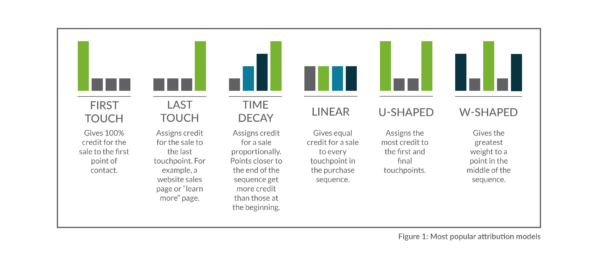Marketers are under increasing pressure to be accountable for their media investments. One of the biggest challenges is measuring programmatic top-of-funnel performance and connecting your outcomes to bottom-line results. Developing a holistic set of performance metrics and relevant key performance indicators (KPIs) is a critical skill that you’ll need to prove that your full-funnel media strategy is working.
Full-funnel marketing is built upon the idea that each stage of the funnel is connected to the others. In fact, upper-funnel channels serve the critical role of filling the lower levels with qualified prospects. But the tactics that work at one stage don’t necessarily work at another stage. The same is true for their performance metrics.
A valuable tool for measuring channel value within the funnel is attribution modeling, which identifies the customer journey pathways that provide the highest return on investment (ROI). Attribution modeling data provides deep insight into customer behavior and enables marketers to optimize high-return conversion pathways to make them more customer-friendly. Figure 1 provides a brief overall of several commonly used attribution models. The most effective models for your agency will depend on client needs and sales cycle complexity.
Marketing metrics are the KPIs used by marketing teams to quantify campaign results. But it’s important to view campaign performance through the lens of business KPIs to measure how each campaign contributes to big-picture goals, such as revenue or market share growth. These are the kinds of statistics that clients and other decision-makers want–and need–to hear.
What ultimately matters most is how each of the channels in your media mix perform overall to further your business goals. As we’ve already said, different digital channels work best in different stages of the marketing funnel. For instance, you can use connected TV ads at the top of the funnel to reach broad audiences with brand-building content, or programmatic retargeting campaigns lower in the funnel to re-engage website visitors.
But of course, no one said this was going to be easy. It may be a challenge to track an increasingly complex buy-side technology stack that includes disparate platforms that don’t provide a holistic view of omnichannel performance. The solution to these challenges may be a programmatic platform, which uses machine learning and artificial intelligence (AI) to automate time-consuming, manual tasks such as bidding and ad placement. Running a programmatic platform in-house provides real-time access to every cost source, which can be viewed easily in real-time.







